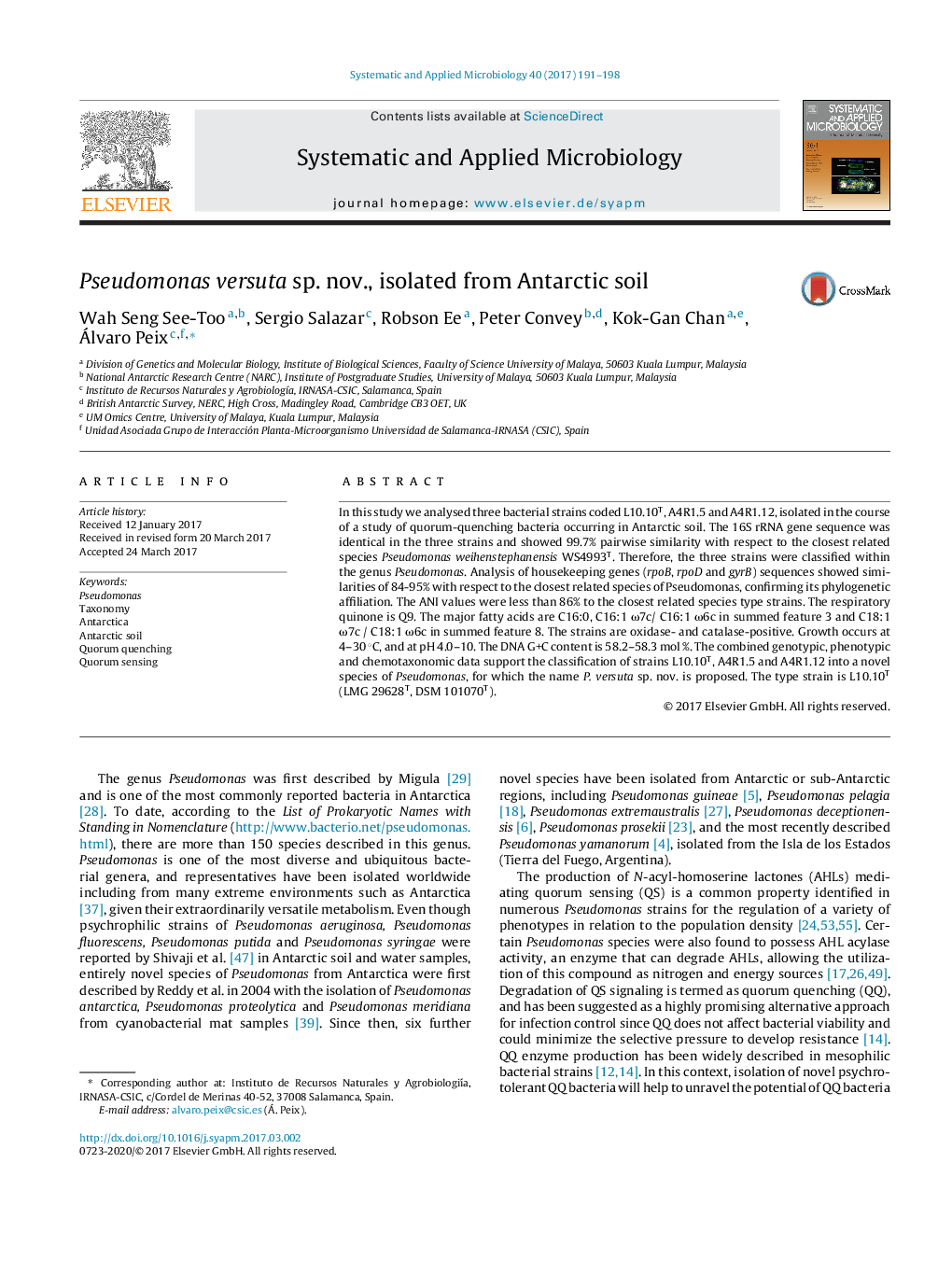| Article ID | Journal | Published Year | Pages | File Type |
|---|---|---|---|---|
| 5519129 | Systematic and Applied Microbiology | 2017 | 8 Pages |
In this study we analysed three bacterial strains coded L10.10T, A4R1.5 and A4R1.12, isolated in the course of a study of quorum-quenching bacteria occurring in Antarctic soil. The 16S rRNA gene sequence was identical in the three strains and showed 99.7% pairwise similarity with respect to the closest related species Pseudomonas weihenstephanensis WS4993T. Therefore, the three strains were classified within the genus Pseudomonas. Analysis of housekeeping genes (rpoB, rpoD and gyrB) sequences showed similarities of 84-95% with respect to the closest related species of Pseudomonas, confirming its phylogenetic affiliation. The ANI values were less than 86% to the closest related species type strains. The respiratory quinone is Q9. The major fatty acids are C16:0, C16:1 Ï7c/ C16:1 Ï6c in summed feature 3 and C18:1 Ï7c / C18:1 Ï6c in summed feature 8. The strains are oxidase- and catalase-positive. Growth occurs at 4-30 °C, and at pH 4.0-10. The DNA G+C content is 58.2-58.3 mol %. The combined genotypic, phenotypic and chemotaxonomic data support the classification of strains L10.10T, A4R1.5 and A4R1.12 into a novel species of Pseudomonas, for which the name P. versuta sp. nov. is proposed. The type strain is L10.10T (LMG 29628T, DSM 101070T).
